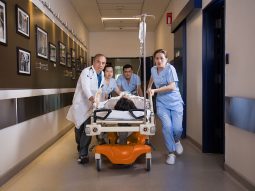When FV Hospital began accepting and treating F0 patients, every passing day was a battle for the medical team at the Covid-19 Treatment Department, which faced human resources difficulties alongside the increased pressure of admitting more and more patients whose lives hung in the balance.During the launch of photo exhibition “Memorable moments during COVID-19 at FV” in December, people shared stories, experiences and the hard decisions made during those difficult days, reflecting on what was learned to motivate everyone to overcome any challenges that lie ahead.
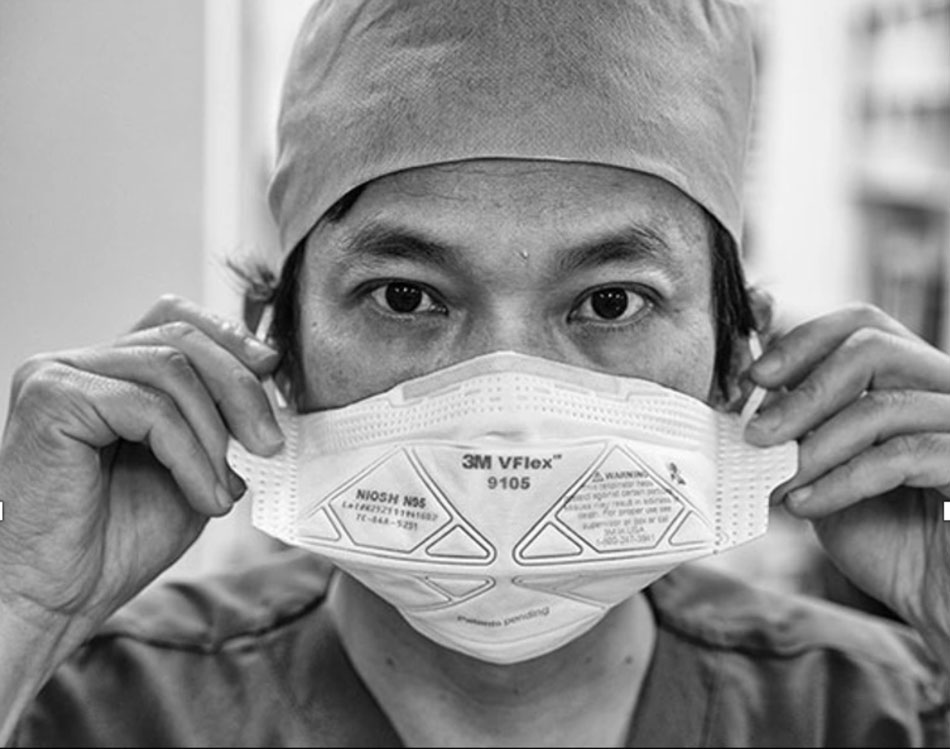
Dr Ho Minh Tuan, Head of Cardiology and Head of FV’s Covid-19 Treatment Department
Behind the door of the Covid-19 Treatment Department
Memorable moments during COVID-19 at FV
During the second week of July 2021, the inpatient area of FV Hospital’s Internal Medicine Department of FV Hospital was absorbed by the Covid-19 Treatment Department. The entire floor was divided into Covid-19 treatment areas, buffer zones and clean areas for the treatment team to work. The central nursing team area of the East Wing became an “office”, where, at 8 a.m. every day, Dr Ho Minh Tuan, Head of Cardiology and Head of FV’s Covid-19 Treatment Department, held briefings on treatment for F0 cases at FV.
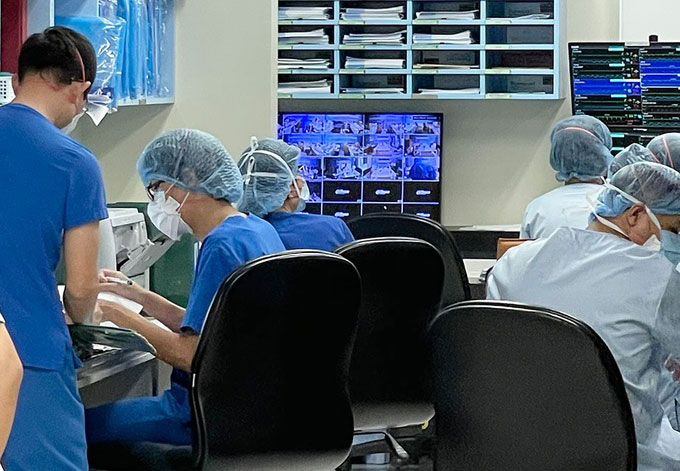
The Covid-19 treatment department, FV hospital is always in a state of urgency and stress.
Beyond the meeting room, nurses were busy preparing for the morning treatment rounds tour, donning protective clothes and assembling medicines, consumables and other necessary tools for each patient. All members of staff were checked thoroughly before entering the treatment area and completing their rounds before returning to the designated “clean area” at noon.
Every 10 minutes, at least five patients would call for nursing help. Under the coordination of Ms Chu Thi Nguyet Anh, Head Nurse of Internal Medicine, nurses quickly entered the treatment area to check the situation. As soon as they left the room, they had to run to another room. Every day they had to maintain the same relentless pace.
“One night, 15 patients needed ventilators simultaneously. It was overwhelming for everyone,” says Ms Nguyet Anh.
In the corridor of the treatment area, everyone was covered in protective clothing and constantly moving. Everyone was so busy that it was rare to hear anyone say anything or exchange a greeting.
Prior to the pandemic, a code blue—a hospital emergency code used to describe the critical status of a patient—was rarely a feature of patient transfers, but during Covid-19, it was used constantly. Medications and medical supplies that historically had been needed a few times a month were imported wholesale and many packs were used every day.
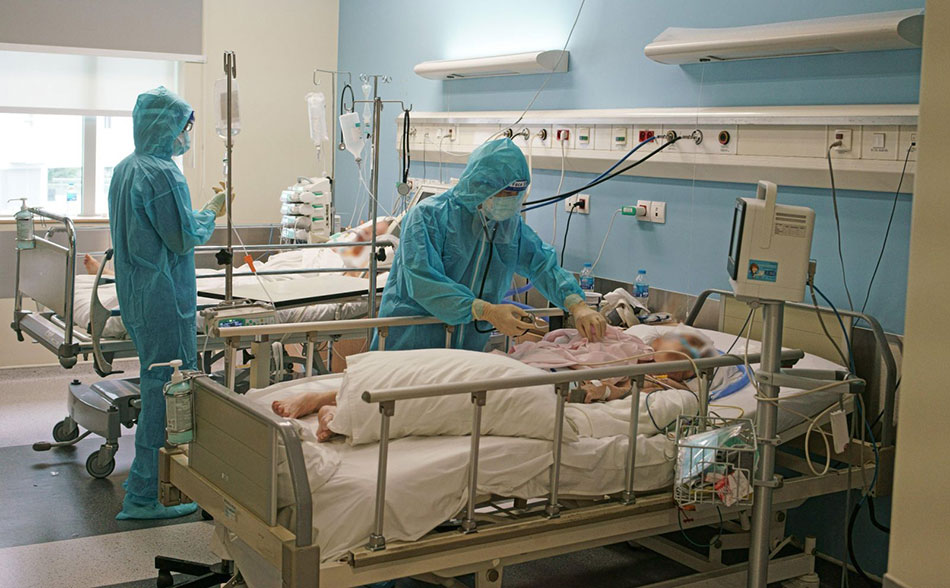
Hospital beds were continuously busy
Typically, wards would have a few empty rooms in which a patient could lie down while waiting for another room to be cleaned, or while waiting to be transferred to a treatment room. During the pandemic, transfers were executed in corridors and when a patient left, the next person would be immediately brought in after the bed had been sterilised.
Every time a case was transferred from the West Wing, dedicated to the treatment of severe illness, to the East Wing, where minor illnesses are managed before patients are discharged, everyone heaved a sigh of relief. Some patients had to stay in the West Wing for a long time, while others never had the opportunity to move because other wards were so busy. The West Wing became the site of many separations, imbued with many striking emotions and thoughts that became a huge mental burden for the team working there.
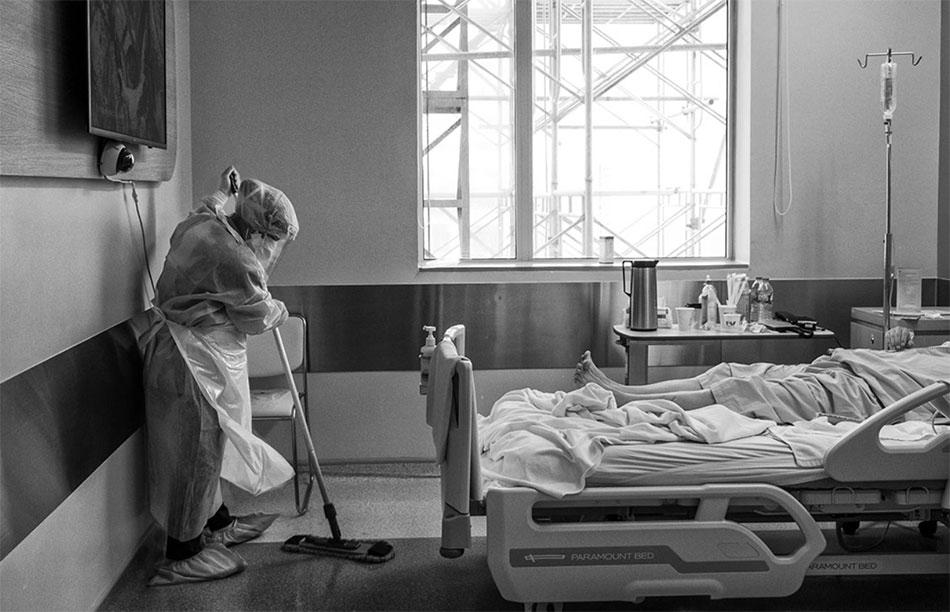
The West Wing became the site of many separations, imbued with many striking emotions and thoughts
“A lot of patients passed away very quickly, within a few hours or one or two days of being admitted. I have been a doctor for 30 years and I have never encountered a situation like this. Those days are deeply imprinted in the memories of our doctors and nurses,” said Dr Nguyen Thi Lam Giang, Former Head of Anaesthesia and ICU, FV Hospital.
An unshrinking spirit
In the early stages of the pandemic, few people were vaccinated so the number of infections was high and symptoms were very serious. Many patients required ventilation or oxygen delivered by high flow nasal cannula (HFNC). Most patients with severe cases of Covid-19 also had underlying diseases such as heart disease, diabetes or cancer, and doctors had very little information about the novel coronavirus and how it impacted patients with comorbidities. Treatment teams had to simultaneously provide practical care while constantly studying the latest research about Covid-19, practicing according to evolving international guidelines from health authorities in the UK, US and EU and Vietnam’s Ministry of Health.
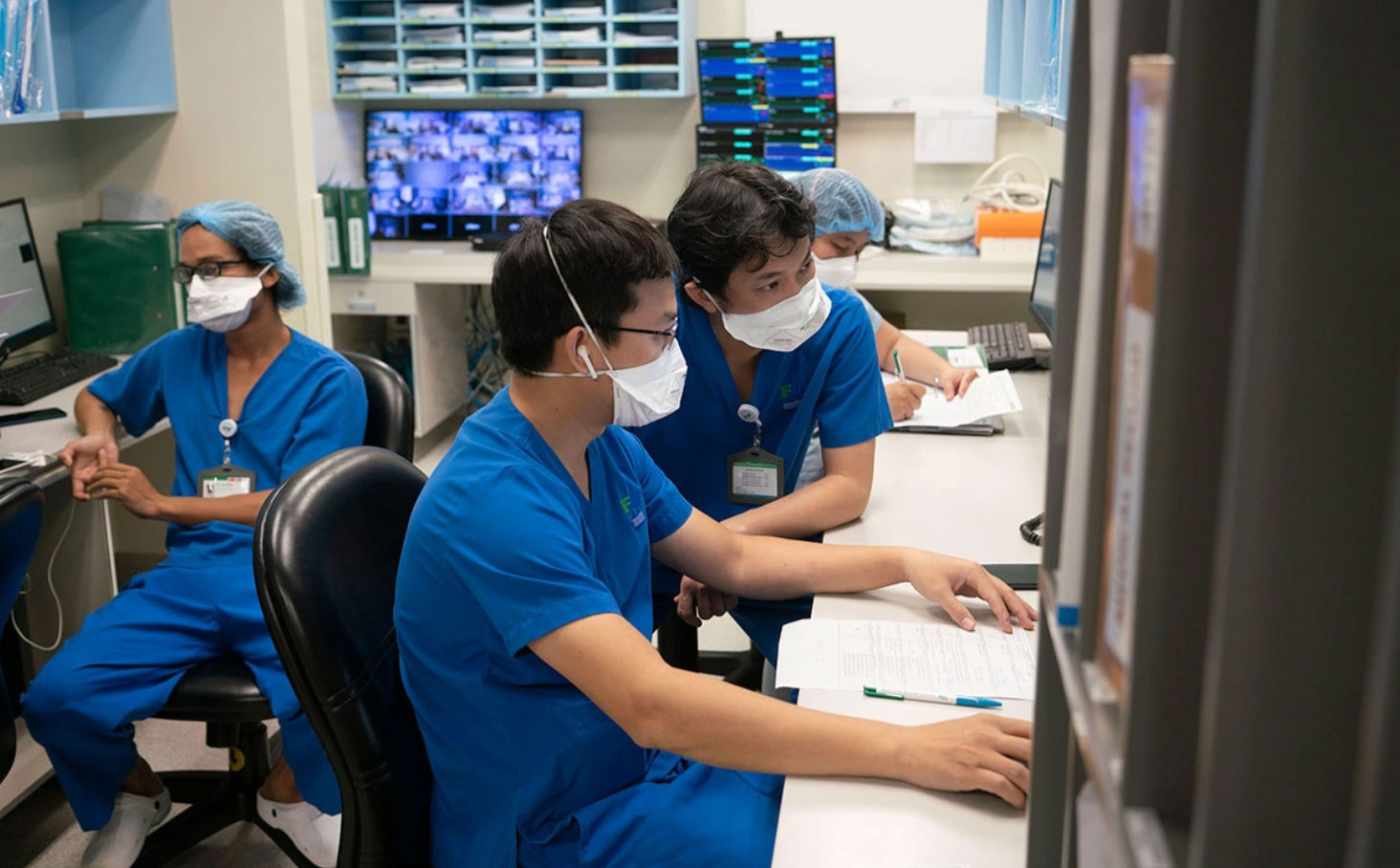
Doctors held interdisciplinary consultations every day
Doctors held interdisciplinary consultations every day, in some cases taking time to consult two to three times a day, every time needing time to remove and then put on personal protective gear when they entered or left the treatment area.
The pressure on the nursing team was also incredibly intense. Ms Nguyet Anh, Head Nurse of Internal Medicine, shared that experienced nurses felt like new graduates when treating Covid-19. Internal Medicine Department nurses had never taken care of ventilator patients before. Ms Nguyet Anh had also never coordinated a nursing team to take care of so many patients at once.
When receiving a new patient, nurses must complete many tasks, including preliminary screening, monitoring health indicators, and arranging preventative measures to ensure no infection risks are present. Ventilated patients cannot eat on their own as their oxygen index will drop each time their mask was removed. This meant that nurses had to feed patients a spoon of rice at a time, quickly replacing the mask as soon as the patient had swallowed so that they could continue breathing.
“Normally a nurse takes care of two to three patients, but during the pandemic each nurse was placed in charge of five or six patients. We knew that when a patient was admitted, no relatives were permitted to accompany them to offer support, so we always tried our best to help as much as we could in any way. There were days when we were so exhausted that we couldn’t return to the hotel assigned to us to rest, so we used folding chairs and slept in the duty room,” she recalls.
To reduce the load on frontline staff, the hospital’s leadership mobilised more human resources from other departments and called on a large number of doctors from all departments to voluntarily participate in treatment at FV’s Covid-19 Treatment Department, where every day continued to be a battle between life and death. Doctors and nurses had to work, eat, and sleep at the hospital, using every moment of downtime to study the coronavirus and emerging best practices in treating it.

The medical staff of FV Hospital worked with a brave spirit during the pandemic
Despite their anxieties and fears, FV’s team members remained constant, ensuring they had correctly used all protective gear, diligently checking every centimetre of the clean area and running through the corridors of the treatment wards to provide care and hope to innumerable patients every day.
Ms Nguyet Anh shared: “Who is not afraid of death? All of us here were afraid. But the fear of illness is not as great as how we would feel if we failed to care for a patient.”
During those dark days, what kept FV’s “white-coated angels” tirelessly on-task was the worry that they might not offer enough support to patients. The morals of the medical profession and the oaths and promises they had made did not allow them to give up.
On December 8, 2022, FV Hospital launched the photo exhibition “Memorable moments during COVID-19 at FV” to honour the dedication of staff who worked tirelessly to overcome every difficulty and ensure the hospital delivered on its commitment to offer to care to everyone in the community during the pandemic. This exhibition, displayed within the hospital campus, depicts many intense moments of the pandemic captured by the lens of French photographer Pier Laurenza, who was also a Covid-19 patient at FV. After receiving a second dose of the vaccine, Pier asked if he could stay in the hospital, silently documenting theses unprecedented moments in FV’s nearly 20-year history. This exhibit also documents the difficulties facing Vietnam and the world during COVID-19.

 Vi
Vi 


